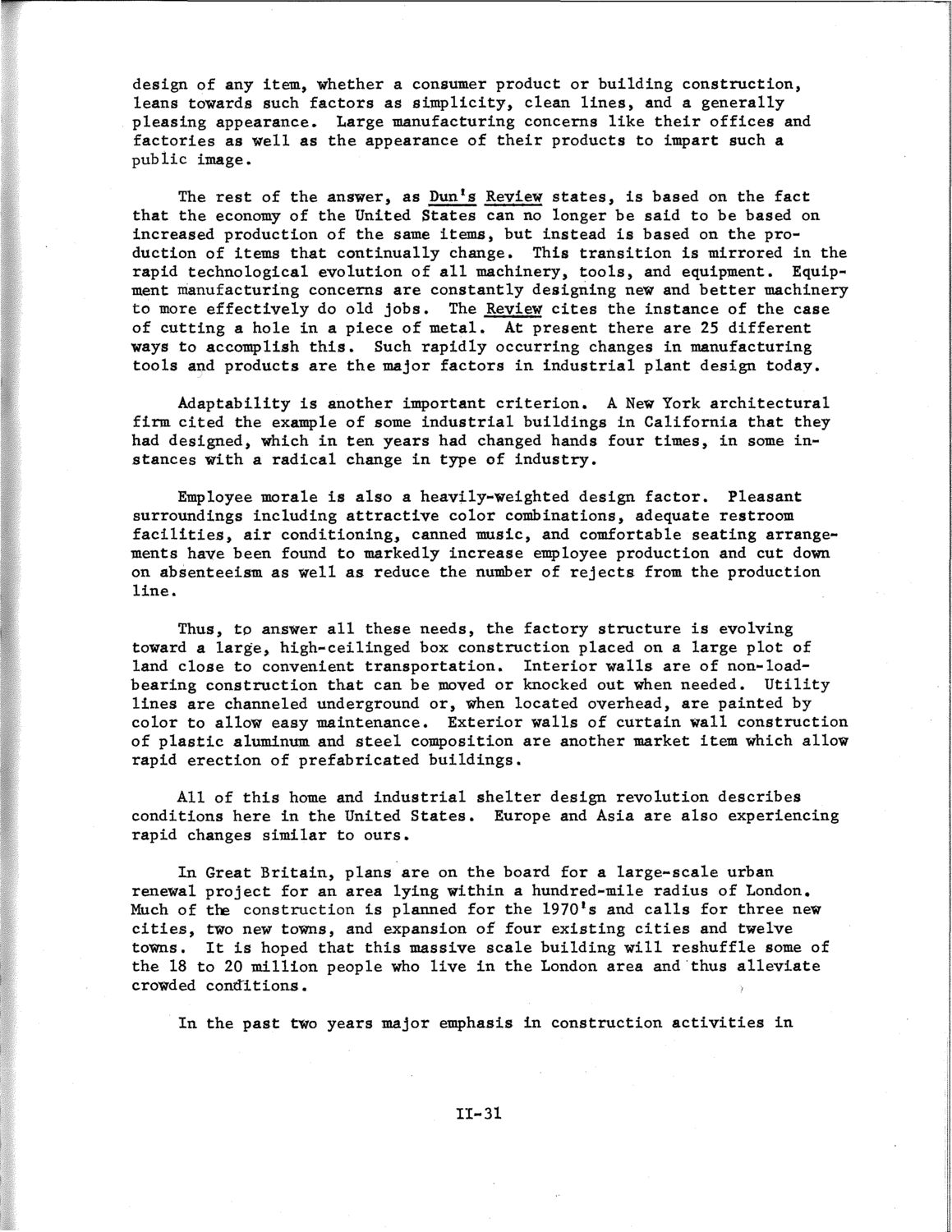| |
| |
Caption: SWE - Proceedings of the First International Conference of Women Engineers and Scientists
This is a reduced-resolution page image for fast online browsing.

EXTRACTED TEXT FROM PAGE:
design of any item, whether a consumer product or building construction, leans towards such factors as simplicity, clean lines, and a generally pleasing appearance. Large manufacturing concerns like their offices and factories as well as the appearance of their products to impart such a public image. The rest of the answer, as Dun's Review states, is based on the fact that the economy of the United States can no longer be said to be based on increased production of the same items, but instead is based on the production of items that continually change. This transition is mirrored in the rapid technological evolution of all machinery, tools, and equipment. Equipment manufacturing concerns are constantly designing new and better machinery to more effectively do old jobs. The Review cites the instance of the case of cutting a hole in a piece of metal. At present there are 25 different ways to accomplish this. Such rapidly occurring changes in manufacturing tools and products are the major factors in industrial plant design today. Adaptability is another important criterion. A New York architectural firm cited the example of some industrial buildings in California that they had designed, which in ten years had changed hands four times, in some instances with a radical change in type of industry. Employee morale is also a heavily-weighted design factor. Pleasant surroundings including attractive color combinations, adequate restroom facilities, air conditioning, canned music, and comfortable seating arrangements have been found to markedly increase employee production and cut down on absenteeism as well as reduce the number of rejects from the production line. Thus, to answer all these needs, the factory structure is evolving toward a large, high-ceilinged box construction placed on a large plot of land close to convenient transportation. Interior walls are of non-loadbearing construction that can be moved or knocked out when needed. Utility lines are channeled underground or, when located overhead, are painted by color to allow easy maintenance. Exterior walls of curtain wall construction of plastic aluminum and steel composition are another market item which allow rapid erection of prefabricated buildings. All of this home and industrial shelter design revolution describes conditions here in the United States. Europe and Asia are also experiencing rapid changes similar to ours. In Great Britain, plans are on the board for a large-scale urban renewal project for an area lying within a hundred-mile radius of London. Much of the construction is planned for the 1970*s and calls for three new cities, two new towns, and expansion of four existing cities and twelve towns. It is hoped that this massive scale building will reshuffle some of the 18 to 20 million people who live in the London area and thus alleviate crowded conditions. In the past two years major emphasis in construction activities in 11-31
| |